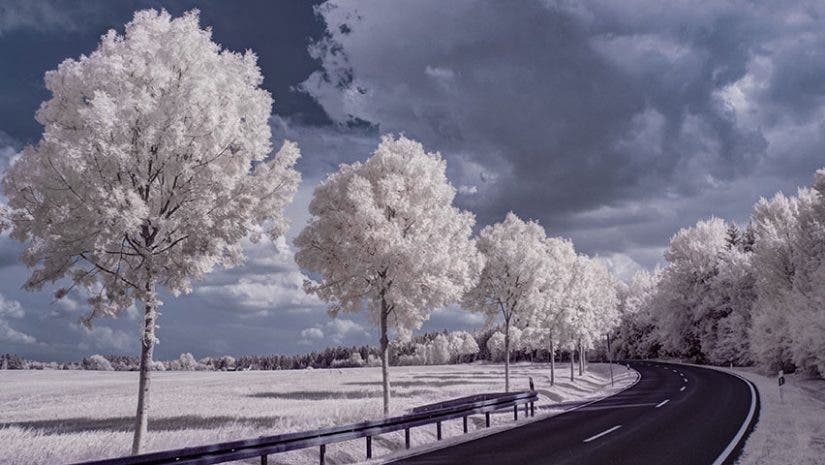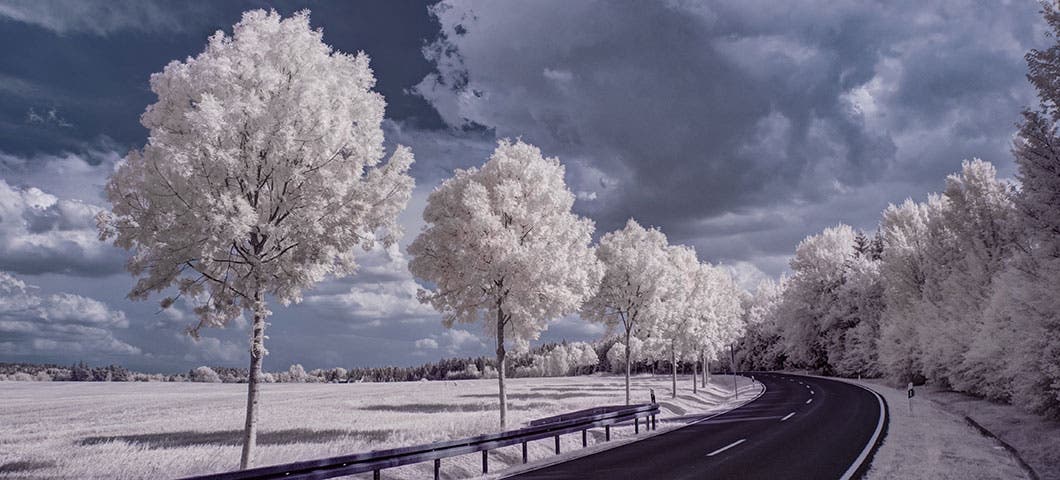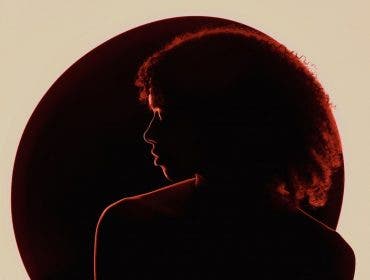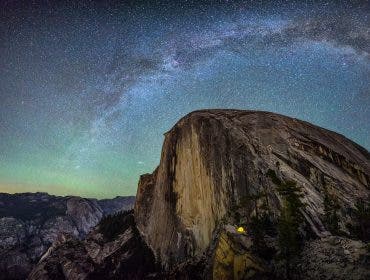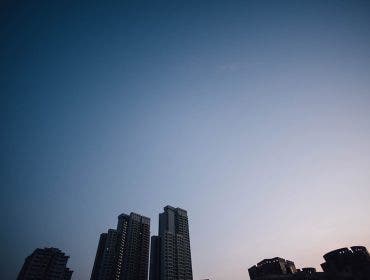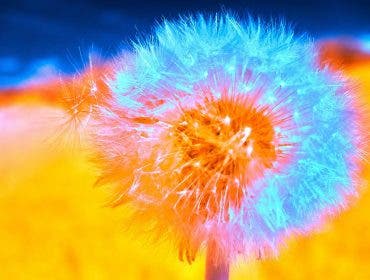Infrared photography is definitely unlike what many of us have seen—and we mean it quite literally. This unique and challenging type of photography involves capturing what our eyes cannot see with the use of specialized camera equipment that can see and record light that is beyond the visible spectrum.
Unlike real-world photographs, IR images are generally a little harder to appreciate, but many modern infrared photographers find it to be a great way to create an entirely different effect in your photographs and capture dreamy, surreal landscape images.
If you haven’t tried it before and are learning about it for the first time, this article will help you understand how cameras capture IR images and provide stunning visual examples or IR images, so you’ll know the kind photos that you can look forward to producing when you decide to try it out for yourself.
What is Infrared Photography?
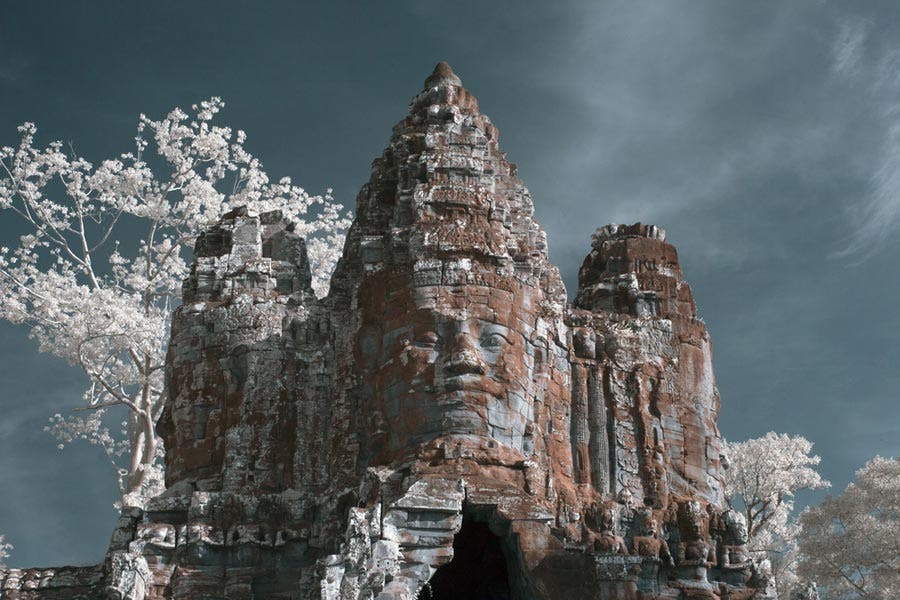
Infrared (IR) photography follows the basic photographic concept of “capturing light,” except it captures the ever-present infrared light around us that is virtually impossible to see with the naked eye.
In scientific terms, visible light that reflects all the colors that we can see is measured between wavelengths of 400-700 nanometers (nm), while “near IR” or infrared is measured between 700-1,000 nm.
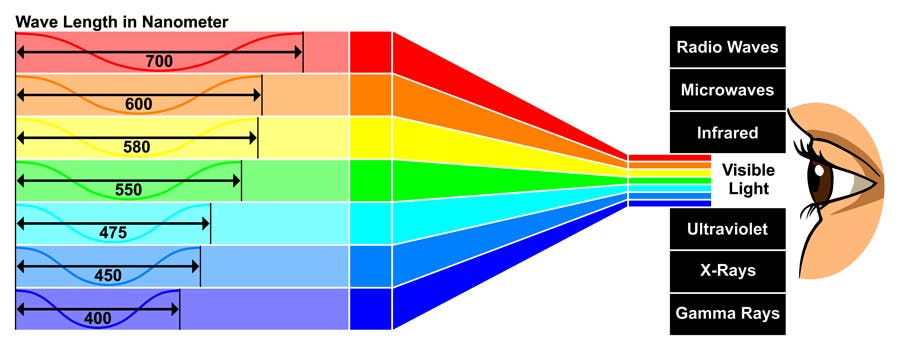
However, infrared light can be felt as heat. And since heat can be transferred, elements like colors, textures, the sky, trees, and even human subjects will reflect and radiate infrared light differently as opposed to visible light.
Green trees, plants, and clouds that reflect the most infrared light will look whiter while blue skies that don’t reflect IR will translate into black areas. Infrared shooters typically use filters with varying color strengths or photo editing programs to create even more unique (albeit slightly eerie) photographic effects.
This type of photography dates back to the age of film photography. In fact, it became so popular that Jimi Hendrix, Donovan, and Frank Zappa’s album covers in the ‘60s were inspired by the psychedelic and artistic results of IR photography. However, shooting infrared back then was a lot more complicated (and expensive) compared to today, mainly due to film’s unpredictability and the expense that came with specialized film rolls.
What are Infrared Cameras Often Used for?
Infrared cameras aren’t just for unique and interesting photography. In fact you may already be interacting with infrared imaging in your normal life without knowing it.
Any time you visit an airport, you’re likely to see infrared technology and thermal imaging cameras in use, detecting temperature differences in passengers and luggage. Some doctor’s offices also use infrared thermometers and infrared imaging for temperature measurement, to detect issues with circulation and other medical concerns.
If you’re a wildlife enthusiast, you may have used trail cameras to capture wildlife activity. These cameras use infrared sensors to detect wildlife by sensing temperature differences and heat signatures. In trail cameras, infrared technology is also used for night vision and capturing nocturnal wildlife.
Other industries such as law enforcement, mechanical engineering, and home repair and inspection use real-time thermal imager measurements with a rapid refresh rate to detect minute variations in temperature ranges. Some use thermal imaging cameras connected to phones via bluetooth to see through walls and other obstacles.
Most Common Uses of Infrared Cameras
A normal camera looks for wavelengths in the visible spectrum and records them as an image. An infrared camera looks for low-frequency electromagnetic radiation felt as heat and transforms it into an image. It doesn’t need light to be able to record images. It only needs heat. Therefore, infrared photography is used whenever your object of interest is not visible, but it emits heat.
Among the most common uses of infrared cameras are:
- Security: An IR camera can locate people in restricted areas where light isn’t available by detecting the heat emitted by their bodies. Night surveillance cameras usually record in infrared.
- Fire detection: Firefighters use infrared images to find the precise location of fires in burning buildings to evaluate the risks and plan their mission. They can also see where people are located inside the house.
- Wire detection: Engineers use infrared cameras to spot active wires for maintenance purposes or to avoid them on construction sites.
- Heat loss: Infrared imagery is used to measure how much heat a building loses in order to evaluate its integrity, quality of isolation, and sustainability.
- Animal health checks: Infrared technology helps veterinarians find hot spots in animals’ joints and diagnose arthritis or autoimmune diseases.
How Do Infrared Cameras Work?
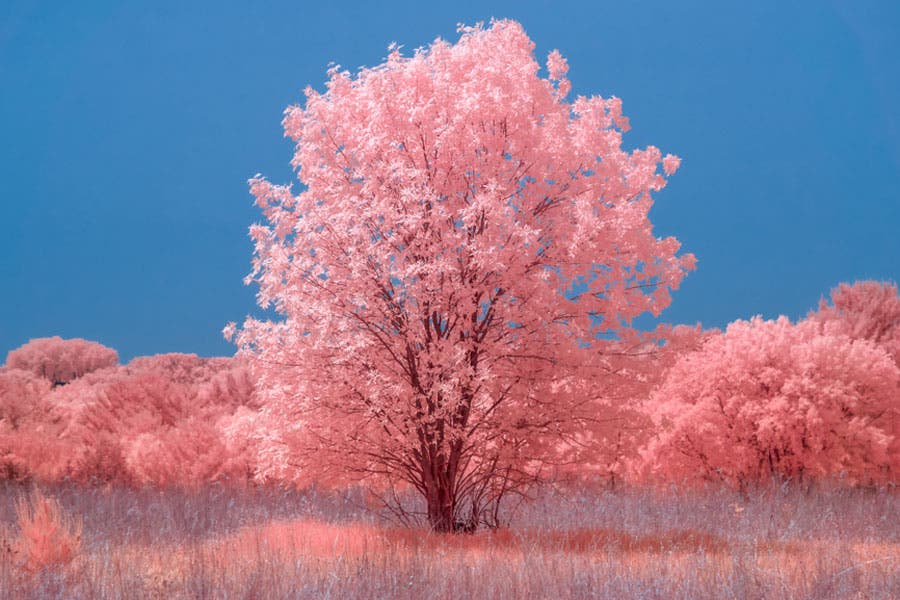
Infrared cameras are able to detect infrared energy (or heat) without being in close contact with the subjects. Analog infrared cameras use films that are sensitive to stray light, which means special IR-sensitive film (like the Kodak HIE) is all you really need to produce IR images with them.
Digital infrared cameras, on the other hand, have infrared sensors that are sensitive to thermal radiation. But despite them being able to detect infrared energy, they don’t normally produce infrared images because most manufacturers sell them with hot mirrors or infrared cut-off filters that block IR light from reaching the sensor and producing weird colors as a result of mixed IR and visible light.
For digital cameras to detect near-infrared spectrum at higher sensitivity, you have two options: You can use an infrared-passing filter (or cold mirrors) that will allow IR light to enter your camera and block visible light or have the camera converted to permanently lose the installed blocking filter and allow more flexibility with a wide range of filters (also known as full spectrum camera conversion).
An infrared film camera will directly record radiated infrared energy onto the loaded IR film, whereas a digital infrared camera will convert detected infrared energy into electronic signals and process these heat signals to produce a corresponding and precise thermal image on the monitor.
If you decide to add enhancements with an infrared-passing filter—like the Hoya R72 —with your DSLR lens without removing the internal infrared blocking filter, your camera will need you to do long exposures even in broad daylight to allow enough time for reflected IR light to pass through.
Best Infrared Cameras
FLIR VUE Pro 640 Thermal Imaging Camera
The FLIR VUE Pro is an infrared camera that provides full data recording of 8-bit thermal video and 14-bit still images. Designed for drone thermal imaging, the camera is perfect for inspections and surveying, increasing the value of sUAS (small uncrewed aircraft system, i.e., drone) operations and services.
It features a 640×512 resolution at 30fps, on-board recording on a micro-SD card with a maximum capacity of 32GB, MAVLink compatibility for mapping, survey, and precision agriculture applications, Pix4Dmapper compatibility, USB connector, and iOS and Android configuration apps. The camera has a 19mm lens for wide-angle perspectives.
FLIR Scout III-640 Thermal Handheld Camera
The FLIR Scout III is a small infrared camera designed for legal hunting, camping, land management, and outdoor recreation and is able to detect heat signatures up to 1200 yards away. It’s easy to use, lightweight, and weather-resistant. You can operate it using only one hand, and it fits your pocket.
The camera features a 640 x 512 resolution, 35mm lens, 4x zoom, 30Hz NTSC video refresh rate, and on-camera image processing tools. In addition, you can set brightness and color palettes and monitor the recording on an LCD screen. The camera runs on a Li-Ion cell battery able to operate for up to five hours before recharging.
FLIR ONE Pro LT Thermal Imaging Camera
Fans of infrared photography will love an infrared camera for iOS devices. The FLIR ONE Pro LT works in any environment and can help you spot potential problems regardless of your activity field. It incorporates the VividIR image processing technology for enhanced resolution and accuracy, an adjustable FLIR OneFit connector, and the FLIR Tools Mobile App for full control.
The camera can focus as close as 15 cm. You can set the spot meter, color palette, level/span, capture mode, and more. The battery lasts for approximately one hour and needs 40 minutes to recharge.
Modified GoPro HERO8 Black 4K UHD 12MP Infrared Camera
The Hero8 infrared camera features interchangeable lenses. It’s compatible with M12 and C/CS-Mount lenses and many other lenses with adapters. The camera is perfect for HDR photography, live streaming video, and other uses, both artistic and industrial. Furthermore, the IR blocking filter is removable so that you can use the camera for normal shooting.
The camera features 4K/60 video resolution, Hypersmooth 2.0 video stabilization, manual exposure control and exposure lock, GPS, voice control, optically fisheye correction, and an integrated touchscreen. It’s small, compact, and user-friendly. But most important of all, Hero8 is versatile and able to tackle any task, from macro to cinematic footage to infrared images.
Infrared vs Thermal Imagery
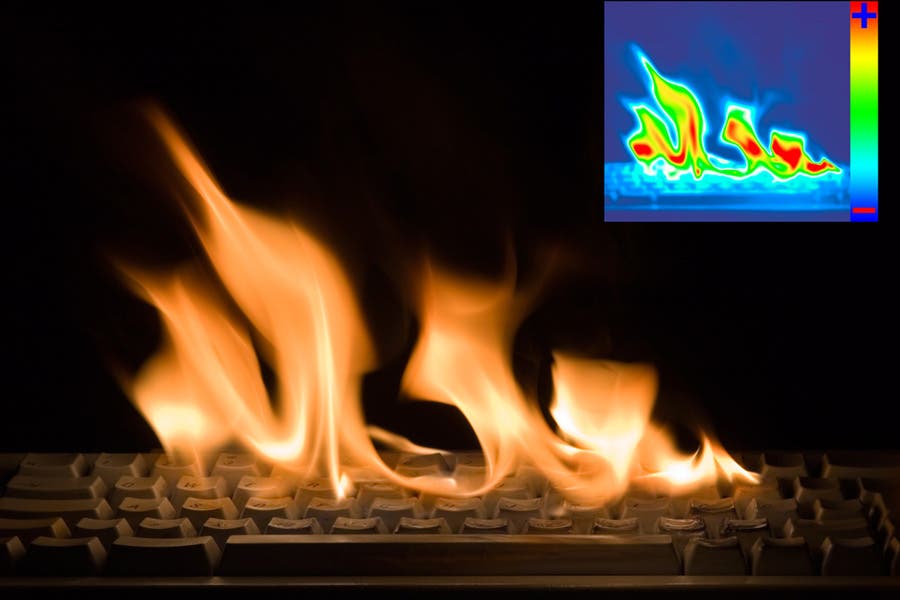
Thermal cameras also use infrared radiation to detect humans (among many others) and form heat zones on the camera viewfinder or monitor to provide a visualization of varying levels of heat within the scene—even in pitch darkness. However, near-infrared and thermal cameras have very important distinctions, particularly in heat sensitivity.
Infrared film and digital camera sensors typically have a much smaller IR-sensitivity range of 250 to 500°C (482 to 932 °F). Meanwhile, thermographic IR film and specialized sensors in dedicated digital thermal cameras are developed to be extra sensitive to a wider range of infrared radiation, specifically between -50 to 2,000°C (−58 to 3,632 °F).
High-quality digital thermal cameras by established brands like FLIR detect infrared radiation that is way hotter than 250 °C (482 °F). Therefore, you can’t possibly use regular IR film or even an IR-modified DSLR to produce thermographic results needed for demanding commercial, industrial, enterprise, and military applications.
How to Get the Best Thermal Images
For quality, high resolution thermal images, it helps to understand that both environmental conditions and the quality of your thermal imaging camera will drastically affect the look of your photographs.
If you’re converting a standard digital camera into a thermographic camera, it helps to start with a high resolution camera body capable of taking detailed images. Pixel count matters if you intend to create large prints from your images. Many photographers use their spare camera bodies and are happy with the results. Consider converting a camera with live-view and touchscreen functionality for easy setting adjustments and real-time previews of how your images will look.
Several environmental factors will affect the quality of your infrared images as well. Make sure you fill the field of view with a variety of subject matter. Natural scenes featuring water, clouds, sky, and foliage often provide enough infrared variation to create an interesting IR image. Remember that it may take some tweaking in post-production to get the exact coloration you’re looking for.
